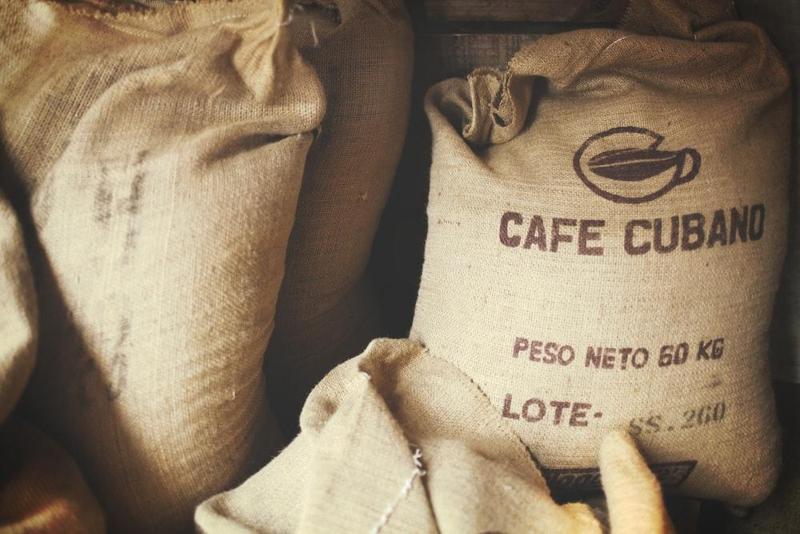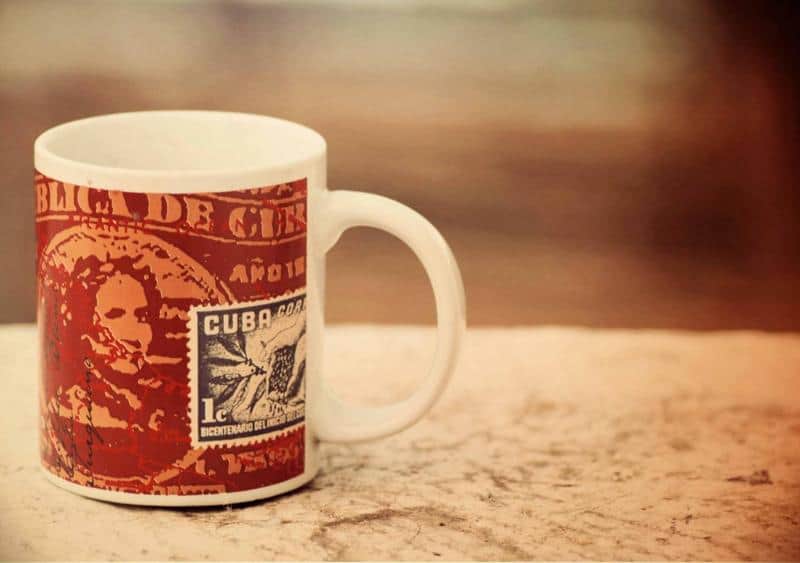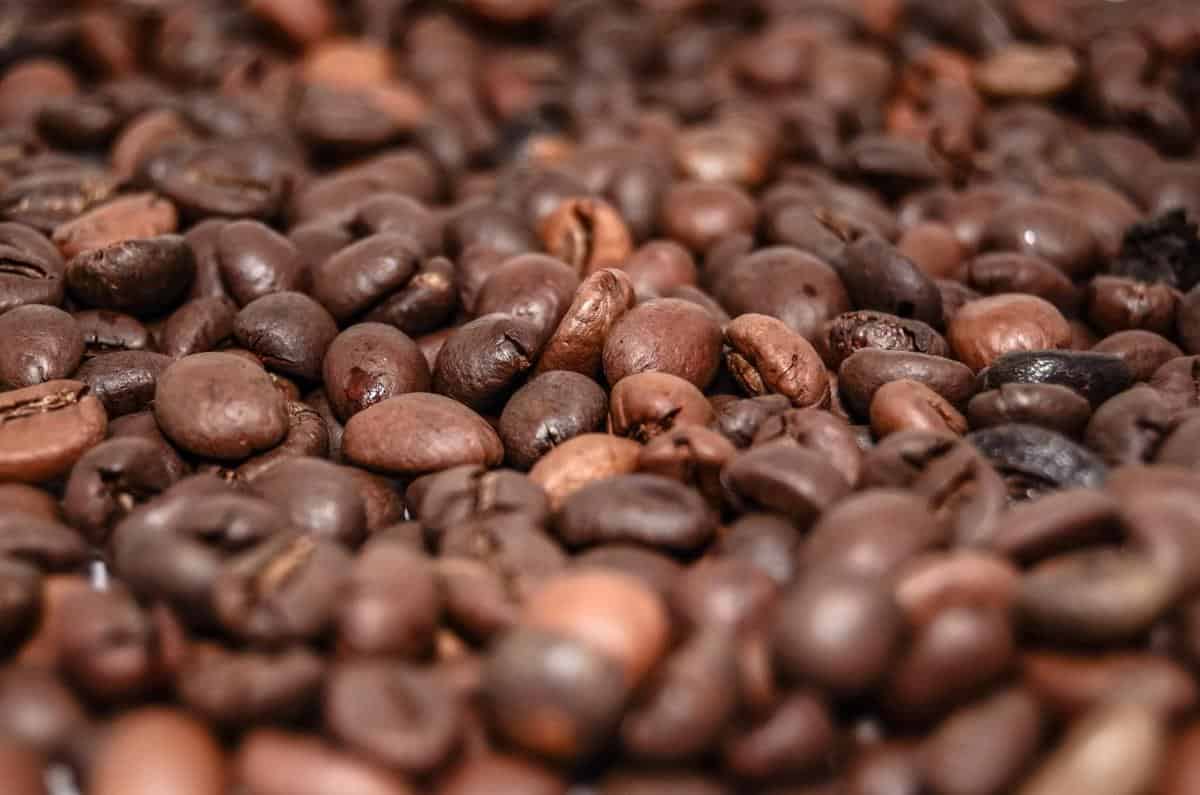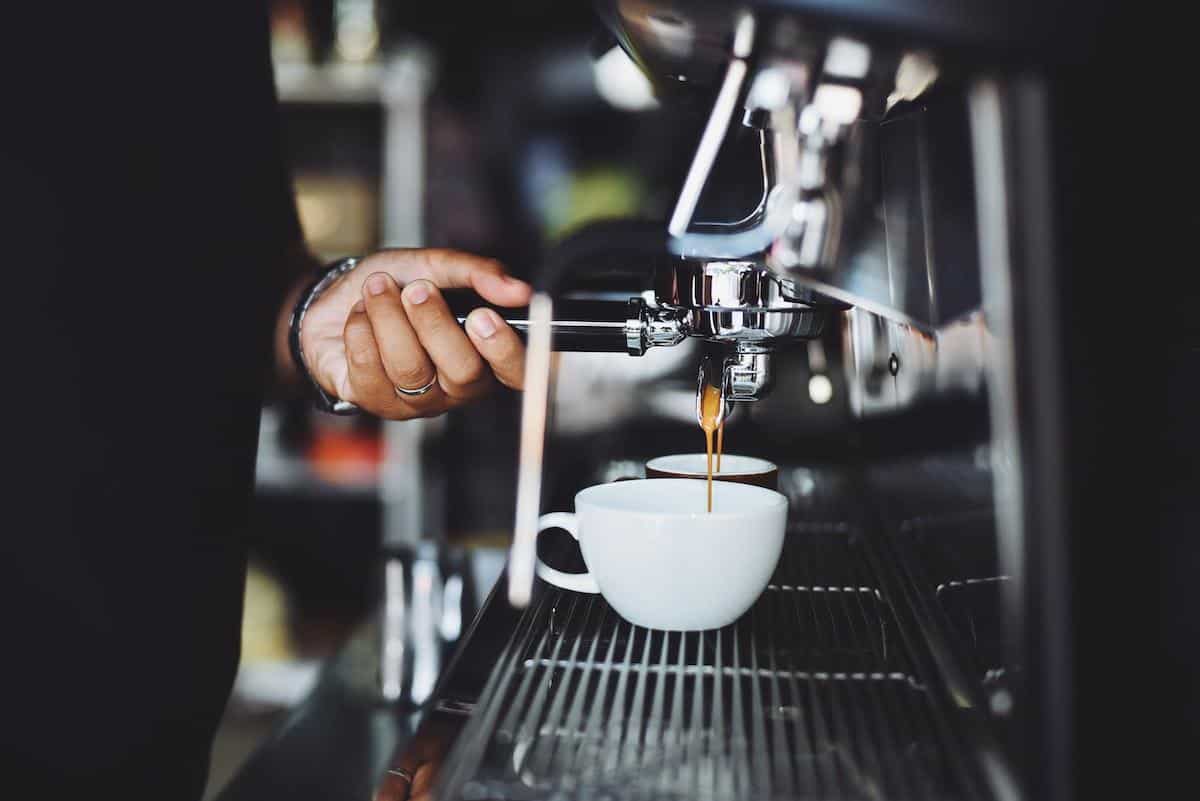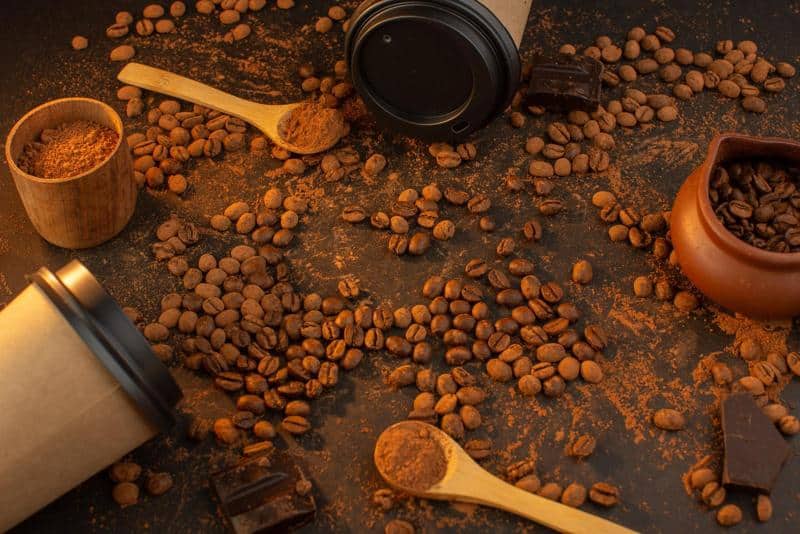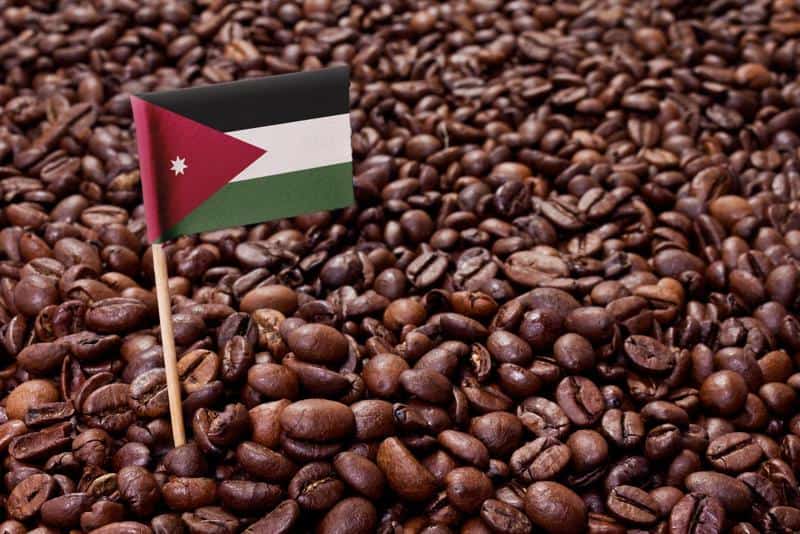In today’s bustling coffee culture, there is one brew that stands out among the rest for its rich and bold flavor – Cuban coffee. With its enticing aroma and strong taste, this traditional Cuban drink has gained a loyal following around the world. From its origins in Cuba to its growing popularity in cafés worldwide, this article delves into the captivating world of Cuban coffee.
Tracing back through history, we uncover the origins of Cuban coffee and its cultural significance that has shaped generations of coffee lovers. From the first beans brought to Cuba by Spanish colonizers to the establishment of iconic cafés on the streets of Havana, the history of Cuban coffee is as vibrant as the drink itself.
To truly experience the magic of Cuban coffee, it is essential to understand its traditional brewing method and key ingredients. From using a stovetop espresso maker called a “cubanita” to incorporating a pinch of sugar during brewing, every step contributes to the unique flavors found in each cup. In this article, we will guide you through all aspects of making an authentic Cuban cafe cubano.
So grab your favorite mug and prepare yourself for a journey into the enchanting world of Cuban coffee. From learning about different types and flavors to exploring its health benefits and indulging in pairing perfection with traditional Cuban pastries, we invite you to join us on this delightful exploration. Get ready to savor every sip as we unveil the irresistible charm of Cuban coffee – a must-try delight for all those seeking a powerhouse brew that will awaken their senses.
The History
Cuban coffee has a rich history that dates back to the 18th century, when it was first introduced to the island of Cuba. The origins of Cuban coffee can be traced back to the French colony of Haiti, where coffee was cultivated and processed. During the Haitian Revolution in the late 18th century, many French plantation owners fled Haiti and settled in Cuba, bringing with them their knowledge and expertise in coffee production.
These French immigrants played a crucial role in the development of Cuban coffee culture. They brought new varieties of coffee plants and introduced innovative techniques for growing and processing coffee beans. As a result, Cuba quickly became one of the largest and most successful coffee-producing countries in the world.
The cultural significance of Cuban coffee cannot be overstated. Coffee plays an important role in daily life and social gatherings in Cuban culture. It is often served after meals as a way to stimulate conversation and bring people together. The act of brewing and serving Cuban coffee is considered a form of hospitality, and it is not uncommon for friends and family members to gather around the kitchen table to share a cup or two.
Cuban coffee also plays a significant role in Cuban history, particularly during times of struggle or political unrest. In fact, during the Cuban Revolution in the 1950s, Fidel Castro famously said, “Just as I am guajiro (a term used to refer to rural Cubans), I love my black coffee.” This statement encapsulated not only his personal preference for strong black Cuban coffee but also its symbolic value as a source of strength and unity for the Cuban people.
Overall, the history of Cuban coffee is intertwined with both cultural traditions and historical events that have shaped the identity of this beloved beverage. From its humble origins rooted in Haitian influence to its enduring significance in Cuban society, Cuban coffee continues to captivate people’s taste buds while maintaining its rightful place as an iconic symbol of Cuban culture.
The Making of Cuban Coffee
The Traditional Brewing Method
Cuban coffee is not just about the bold flavor, but also about the unique brewing method that sets it apart from other types of coffee. The traditional brewing method for Cuban coffee involves using a “moka pot” or a stovetop espresso maker known as a “cafetera” in Spanish. This method allows for the extraction of strong and intense flavors that are characteristic of Cuban coffee.
To make a Cuban coffee using this traditional brewing method, start by adding water to the bottom chamber of the moka pot. Then, fill the filter basket with finely ground dark roasted coffee beans, making sure to tap it gently to distribute it evenly.
Screw on the top part of the moka pot tightly and place it on the stove over medium heat. As the water heats up, steam is created which then passes through the coffee grounds, extracting their flavors and creating a rich, concentrated shot of coffee known as “café Cubano”.
Key Ingredients
In addition to its unique brewing method, Cuban coffee also relies on a distinctive blend of key ingredients. One essential ingredient is dark roasted coffee beans. These beans are typically sourced from Cuba or other Latin American countries like Colombia or Brazil. The dark roast contributes to the strong and robust flavor profile that Cuban coffee is known for.
Another key ingredient in Cuban coffee is sugar. Traditionally, sugar is added directly to the moka pot during brewing to create a sweet and syrupy shot of café Cubano. The sugar caramelizes during this process, adding depth and sweetness to the final cup.
Some variations of Cuban coffee also call for an added touch of spices such as cinnamon or coconut flakes, which infuse additional flavors into an already delightful brew.
Overall, understanding both the traditional brewing method and key ingredients involved in making Cuban coffee allows true coffee enthusiasts to appreciate this distinct and flavorful beverage even more.
The Perfect Cup
Cuban coffee, with its rich and bold flavor, is a delight that many coffee lovers around the world enjoy. While you can find Cuban coffee in cafes and shops, there’s nothing quite like brewing your own cup at home. In this section, we will explore some tips and tricks for brewing the best Cuban coffee in the comfort of your own kitchen.
One key aspect of brewing delicious Cuban coffee is using the right brewing method. The traditional method involves using a stovetop espresso maker called a “cafetera” or “moka pot”. This iconic coffee maker consists of three chambers: a bottom chamber for water, a middle chamber for ground coffee, and an upper chamber for the brewed coffee. As the water boils in the bottom chamber, it creates pressure that forces the water through the ground coffee and into the upper chamber.
To brew the perfect cup of Cuban coffee, start by grinding your coffee beans to a fine consistency. A dark roast is typically preferred for Cuban coffee to achieve that strong flavor. Fill the bottom chamber of your cafetera with cold water up to just below the safety valve.
Place finely ground coffee into the middle chamber without pressing it down too hard. Screw on the top chamber tightly and place it on medium heat until you start hearing a bubbling sound.
Another important element in achieving a great cup of Cuban coffee is using quality ingredients. Authentic Cuban coffee uses 100% Arabica beans which are known for their superior taste and aroma. When purchasing your beans, opt for freshly roasted ones to ensure maximum freshness. Additionally, consider using demerara sugar or another type of raw sugar for sweetness as it enhances the traditional flavors of Cuban coffee.
Mastering the art of frothing milk can further enhance your homemade Cuban coffee experience if you enjoy lattes or cappuccinos. Heat milk in a small saucepan over medium heat until hot but not boiling. Use a whisk or a frother to create a creamy and frothy texture. Pour the milk onto your brewed Cuban coffee to add a touch of creaminess and indulgence.
By following these tips and tricks, you can achieve the perfect cup of Cuban coffee right in your own kitchen. Whether you prefer it strong and black or with a splash of frothy milk, brewing Cuban coffee at home allows you to experiment with different flavors and enjoy this delightful beverage according to your preferences. So grab your cafetera, quality beans, and get ready to savor the rich flavors of this iconic brew.
Exploring the Variety
When it comes to Cuban coffee, there is a wide variety of options available, each with its own unique flavor and characteristics. Whether you prefer a strong and bold taste or something milder and sweeter, there is a type of Cuban coffee that will suit your preferences perfectly.
One popular type of Cuban coffee is Café Cubano, also known as Cafecito or Cuban espresso. This type of coffee is made by brewing a small amount of dark roasted coffee with sugar. The result is a concentrated shot of strong and sweet coffee that is perfect for those who enjoy a robust flavor profile. Café Cubano is typically served in small cups called tacitas, accompanied by a small glass of sparkling water to cleanse the palate between sips.
Another popular variation of Cuban coffee is Café con Leche, which translates to “coffee with milk.” This beverage combines equal parts strong brewed Cuban coffee with steamed milk, resulting in a creamy and smooth drink. Café con Leche is often enjoyed in the morning alongside breakfast or as an afternoon pick-me-up.
For those looking for something lighter and less intense, there is also Colada. Colada refers to a larger serving of Café Cubano that is meant to be shared among several people. It is served in tiny disposable cups and often used in social gatherings or work breaks where coworkers can gather around and enjoy the rich flavor together.
These are just a few examples of the different types of Cuban coffee available. Each type offers its own unique taste experience, allowing coffee enthusiasts to explore the various flavors and find their favorite brew. Whether you prefer a bold and intense flavor or something milder and sweeter, Cuban coffee has something for everyone to enjoy.
The Rise of Cafecito Culture
Cuban coffee, also known as cafecito, is more than just a delicious beverage – it represents a rich cultural heritage and a vibrant social experience. In recent years, the rise of cafecito culture has brought Cuban coffee to the forefront of the coffee scene, captivating coffee enthusiasts around the world.
Coffee as a Social Ritual
In Cuban culture, cafecito goes beyond just satisfying caffeine cravings; it serves as an important social ritual. The act of gathering with friends or family over a cup of cafecito is deeply rooted in the Cuban tradition of building strong community bonds. Whether it’s catching up with old friends at a local cafe or sharing stories and laughter with loved ones at home, cafecito brings people together in an intimate and communal way.
The Art of Conversation
One of the most fascinating aspects of Cuban coffee culture is its connection to conversation. It is said that Cubans take their time to enjoy every sip of cafecito because it provides an opportunity for meaningful conversations. It’s common to see groups of people engaged in lively discussions while savoring their cup of coffee. Cafecito acts as a catalyst for open dialogue and bonding between individuals.
Cafecito in the Workplace
The social aspect of Cuban coffee extends beyond personal gatherings and is also prevalent in workplaces across Cuba. It is customary for colleagues to take short breaks throughout the day to share a cup of cafecito and engage in casual conversations, fostering unity and teamwork. This tradition not only helps build relationships between coworkers but also boosts morale and productivity.
As the popularity of Cuban coffee continues to grow worldwide, more communities are embracing the cafecito culture and incorporating it into their daily lives. Whether you’re enjoying it with friends, family, or colleagues, there’s no denying that cafecito embodies the spirit of connection, conversation, and community that makes it so special.
Health Benefits
Cuban coffee not only offers a delightful and rich drinking experience, but it also comes with surprising health benefits. From boosting energy levels to improving cognitive function, this powerhouse brew has much more to offer than just its bold flavor.
One of the key health benefits of Cuban coffee is its ability to increase alertness and overall brain function. The high caffeine content in Cuban coffee acts as a stimulant, enhancing concentration and mental focus. This can be especially beneficial in the morning or when tackling demanding tasks that require sustained attention.
In addition to its mental benefits, Cuban coffee is also known for its ability to boost physical performance. The caffeine present in the brew stimulates the nervous system, signaling fat cells to break down body fat, which can then be used as fuel during physical activity. This can help improve endurance and enhance athletic performance.
Furthermore, Cuban coffee is packed with antioxidants that help protect the body against harmful free radicals. These antioxidants have been linked to a reduced risk of chronic diseases such as cardiovascular disease and certain types of cancer. They also contribute to maintaining healthy skin by preventing oxidative stress that can lead to premature aging.
When enjoying a cup of Cuban coffee, it’s important to keep in mind that moderation is key. While the health benefits are indeed impressive, consuming excessive amounts of caffeine can lead to negative side effects such as increased heart rate and anxiety. It’s best to savor this delightful brew in moderation for optimal results.
Overall, Cuban coffee proves to be much more than just a delicious beverage – it offers an array of surprising health benefits as well. By enjoying this powerhouse brew in moderation, you can not only satisfy your taste buds but also give your mind and body a natural boost for enhanced performance throughout the day.
Pairing Perfection
When it comes to perfect food pairings, few things can rival the match made between Cuban coffee and traditional Cuban pastries. The combination of these two culinary delights creates a sensory experience that is truly unparalleled. Whether you are enjoying breakfast, an afternoon treat, or a post-dinner indulgence, the pairing of Cuban coffee with traditional Cuban pastries is sure to satisfy your taste buds and transport you to the vibrant streets of Cuba.
Traditional Cuban pastries, also known as pasteles or pastelitos in Spanish, are a beloved part of Cuban cuisine. These delectable treats come in a variety of flavors and fillings, including guava, cream cheese, coconut, and savory options such as ham and cheese. The flaky pastry crusts perfectly complement the rich and bold flavor of Cuban coffee, creating a harmonious balance that is both satisfying and delightful.
One popular pastry often enjoyed with Cuban coffee is the popular guava pastelito. This sweet pastry filled with creamy guava paste pairs exceptionally well with the strong and robust flavor of Cuban coffee. The sweetness of the guava filling contrasts beautifully with the slightly bitter notes of the coffee, creating a combination that is simply irresistible. Additionally, the buttery crust of the pastelito enhances the overall texture of the pairing, making it a true delight for your palate.
Overall, the tradition of enjoying Cuban coffee alongside traditional Cuban pastries has become deeply rooted in Cuban culture. It is not only about savoring delicious flavors but also about coming together as a community to enjoy moments of connection over these cherished treats.
Whether you are lucky enough to visit Cuba or have access to authentic cuban bakeries in your area, be sure to indulge in this heavenly pairing for an unforgettable culinary experience that will transport you straight to Havana.
Where to Find Cuban Coffee
When it comes to finding a delicious cup of Cuban coffee, you don’t have to travel all the way to Cuba. There are plenty of exceptional Cuban coffee shops and cafes around the world that serve this delightful brew. Whether you’re craving a strong shot of espresso or a creamy café con leche, these establishments will satisfy your caffeine fix and transport you straight to the vibrant streets of Havana.
One city known for its thriving Cuban coffee scene is Miami, Florida. As one of the largest Cuban communities in the United States, Miami is home to numerous authentic Cuban coffee shops. One popular spot is Versailles Restaurant, often referred to as the “World’s Most Famous Cuban Restaurant.” Here, you can enjoy an aromatic cortadito and indulge in some tasty pastelitos while taking in the lively ambiance.
If you find yourself in New York City, head over to Café Bustelo’s flagship store located in Manhattan’s East Village. This iconic brand has been serving up robust Cuban coffee since 1928. Step inside this cozy cafe and experience the intoxicating aroma that wafts through the air as skilled baristas whip up perfectly brewed cups of cafecito.
For those across the pond in London, England, there are also great options for experiencing the magic of Cuban coffee. One notable establishment is Cubana Cafe in Waterloo. With its colorful decor and friendly atmosphere, it provides an ideal setting for savoring a traditional café Cubano while enjoying live music performances from talented Latin musicians.
No matter where you are in the world, there’s likely a Cuban coffee shop or cafe waiting to introduce you to the bold flavors and rich cultural heritage of this beloved beverage. So why not embark on a global adventure for your taste buds and explore these hidden gems? Whether it’s morning or afternoon, a cup of authentic Cuban coffee will surely awaken your senses and provide an unforgettable culinary experience.
Conclusion
In conclusion, Cuban coffee is not just a beverage; it is a cultural phenomenon that has been passed down through generations. Its rich and bold flavor, combined with its unique brewing method and key ingredients, make it a coffee experience like no other. Whether you are sipping on a traditional cafecito or exploring the variety of different types of Cuban coffee, this powerhouse brew is sure to delight your taste buds.
Not only does Cuban coffee offer a delicious and invigorating drink, but it also brings people together in a social and community setting. The rise of the cafecito culture has created a space where friends and strangers can gather, share stories, and create lasting memories over a cup of this delightful beverage.
Additionally, while enjoying the irresistible charm of Cuban coffee, you are also reaping surprising health benefits. Studies have shown that moderate consumption of coffee can improve cognitive function, boost mood, and even lower the risk of certain diseases. So not only does it taste amazing, but it can also do wonders for your overall well-being.
Whether you are seeking out the perfect cup of Cuban coffee in your local area or embarking on a journey to explore the best Cuban coffee shops and cafes around the world, one thing is for certain: Cuban coffee is an experience that should not be missed. So indulge in this delightful brew and immerse yourself in the rich flavors and cultural significance that make Cuban coffee truly special.
Frequently Asked Questions
What is different about Cuban coffee?
Cuban coffee is known for its unique brewing method and flavor profile. The main difference lies in the way it is made.
It is traditionally prepared using a stovetop espresso maker called a cafetera or Moka pot, which produces a strong and concentrated coffee brew that is typically served in small cups known as tacitas. Another distinct feature of Cuban coffee is the addition of demerara sugar during the brewing process, which gives it a sweet and caramel-like taste.
Is Cuban coffee very strong?
Yes, Cuban coffee is generally considered to be very strong. The use of dark roasted coffee beans combined with the concentrated brewing method produces a highly caffeinated drink with a robust flavor and intense aroma. It has a bold and rich taste that can be enjoyed by those who prefer strong caffeine kicks in their coffee.
What is traditional Cuban coffee?
Traditional Cuban coffee refers to the classic preparation method and specific serving style that has been cherished in Cuba for generations. As mentioned earlier, it involves using a stovetop espresso maker to produce a strong espresso-like brew called cafecito or colada.
This coffee is often served in small shots known as tacitas or as larger portions called cortadito, which are diluted with steamed milk.
What are the ingredients for Cuban coffee?
The ingredients for Cuban coffee include finely ground dark roasted coffee beans, water, and demerara sugar. The dark roasted beans contribute to the distinct flavor profile of Cuban coffee, while the addition of demerara sugar during the brewing process creates a sweetened result. Some variations may also include a dash of cinnamon or even anise seeds for added complexity.
Is Cuban coffee stronger than espresso?
Yes, Cuban coffee can be considered stronger than espresso due to its concentrated nature and higher caffeine content per ounce. While both drinks are brewed under pressure using hot water and finely ground coffee beans, Cuban coffee tends to be more potent due to its darker roast and smaller serving size.
However, it’s important to note that strength can also vary depending on personal taste preferences and the amount of coffee used in the brew.

